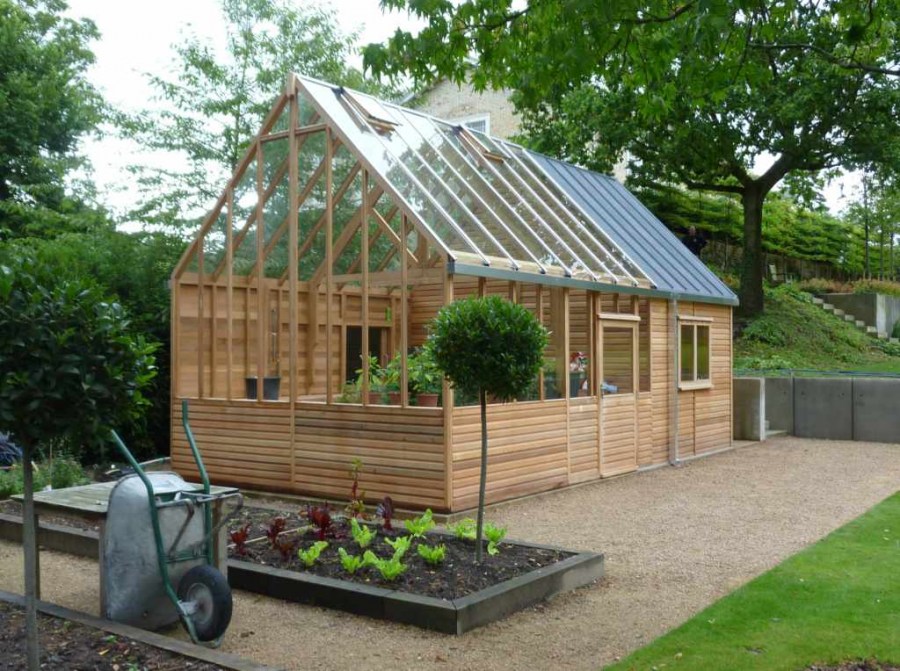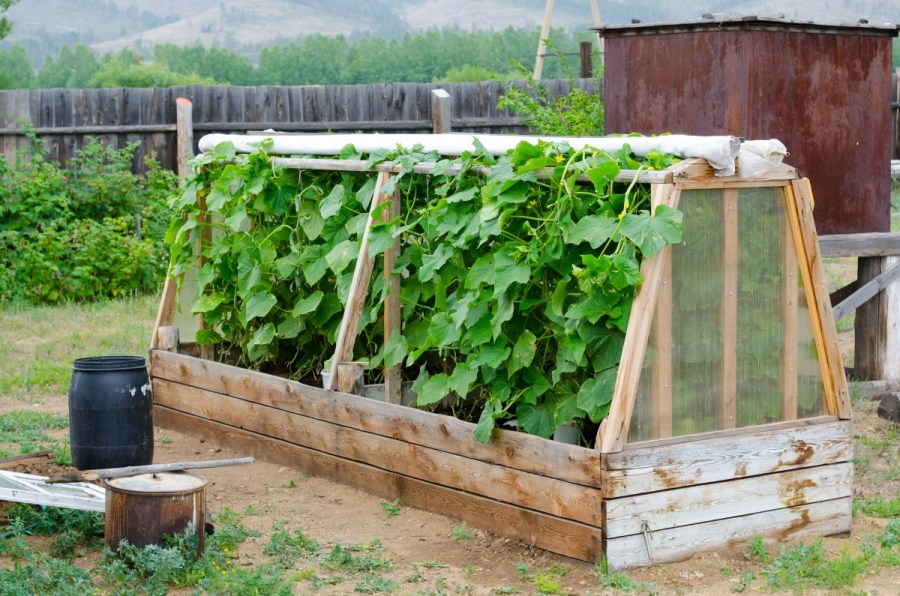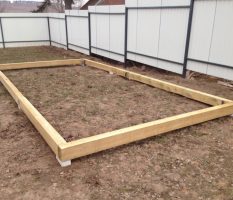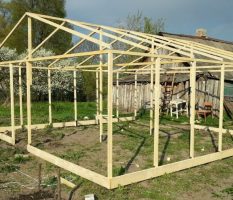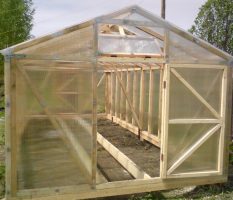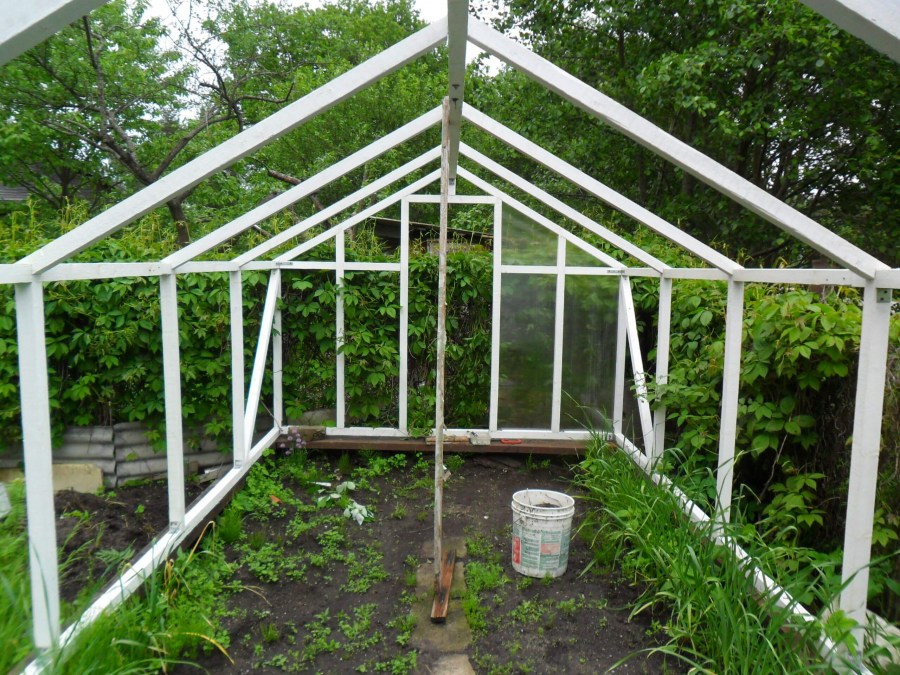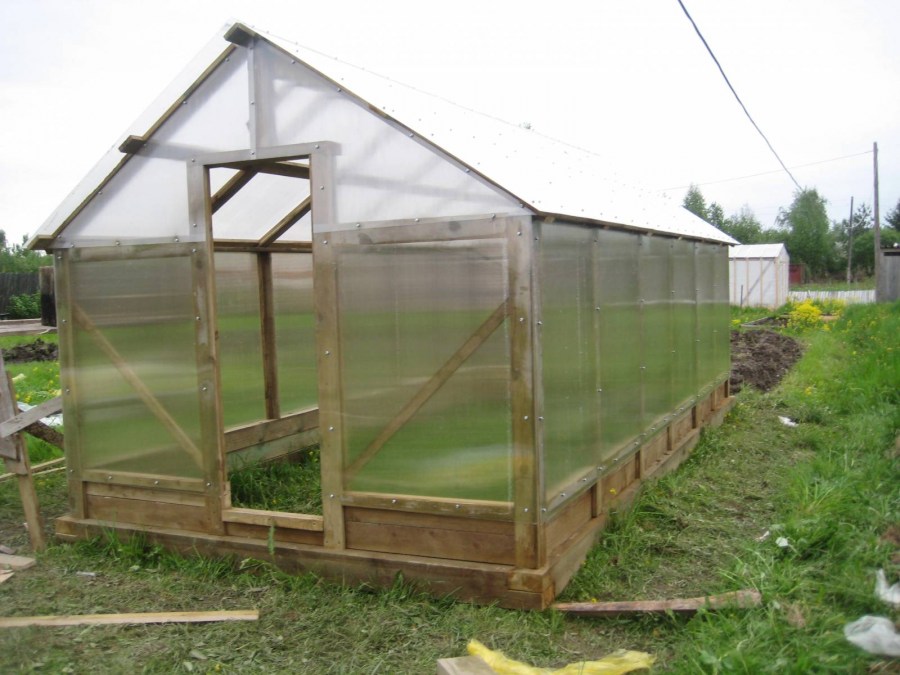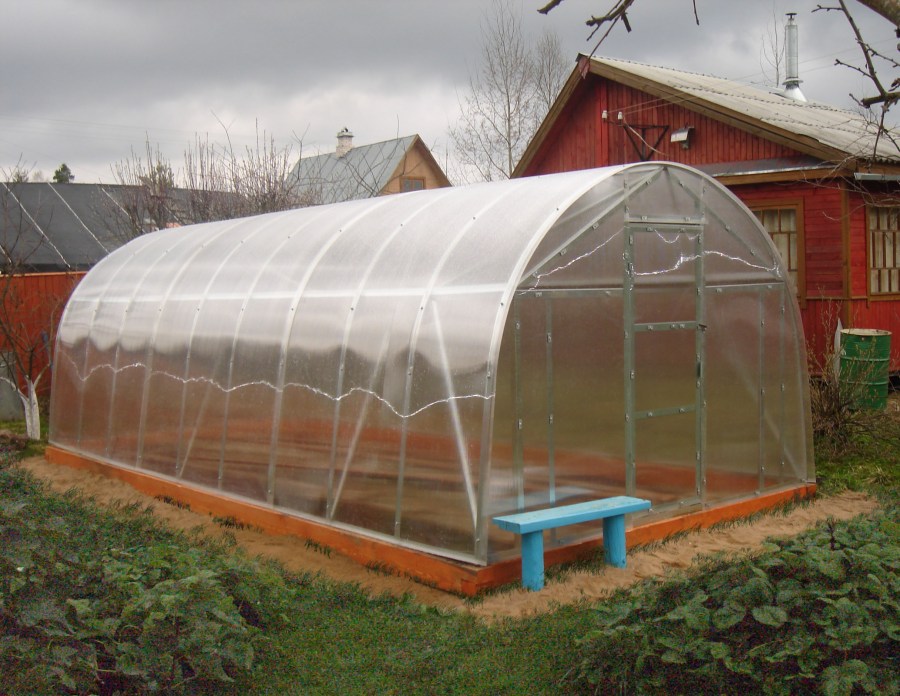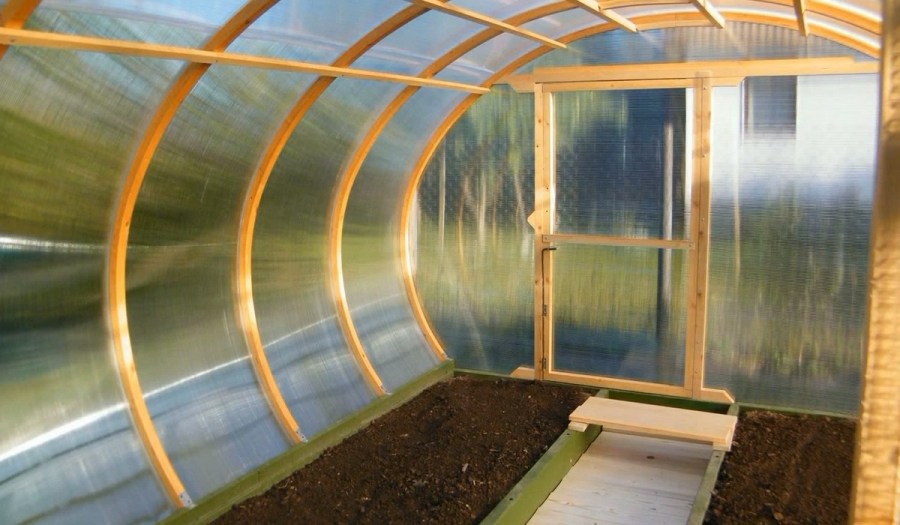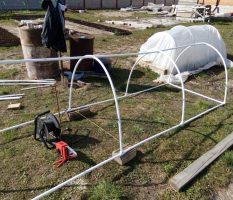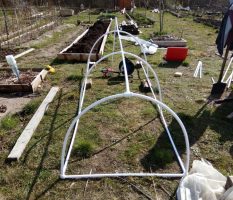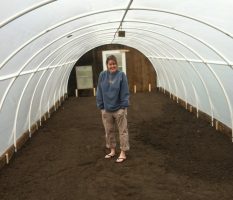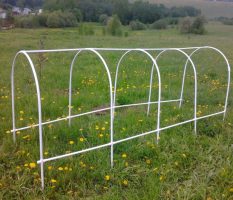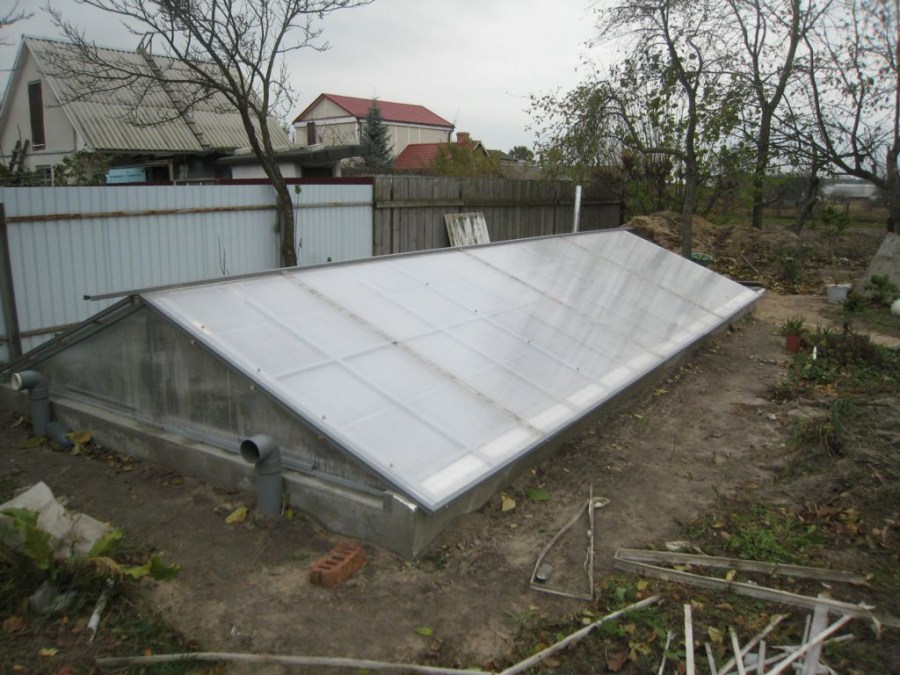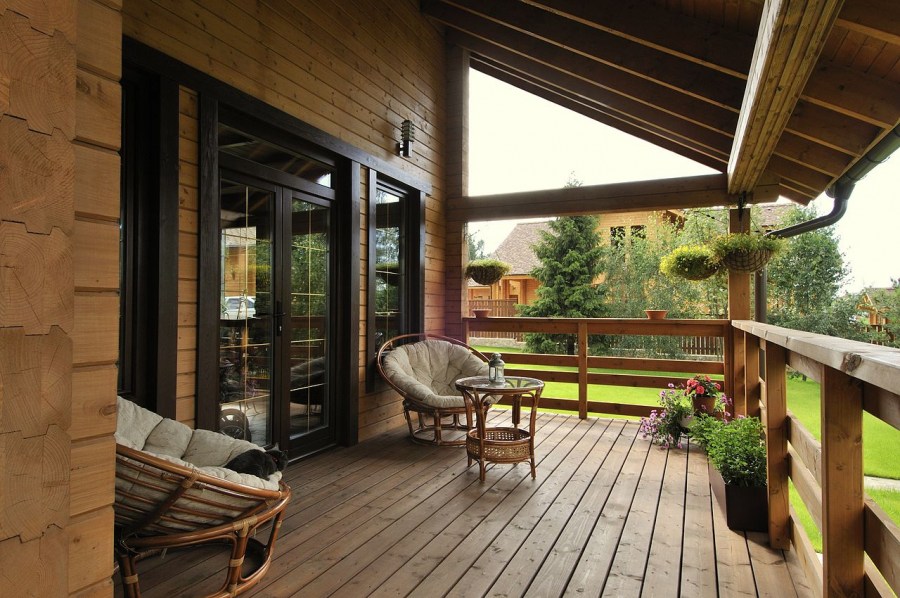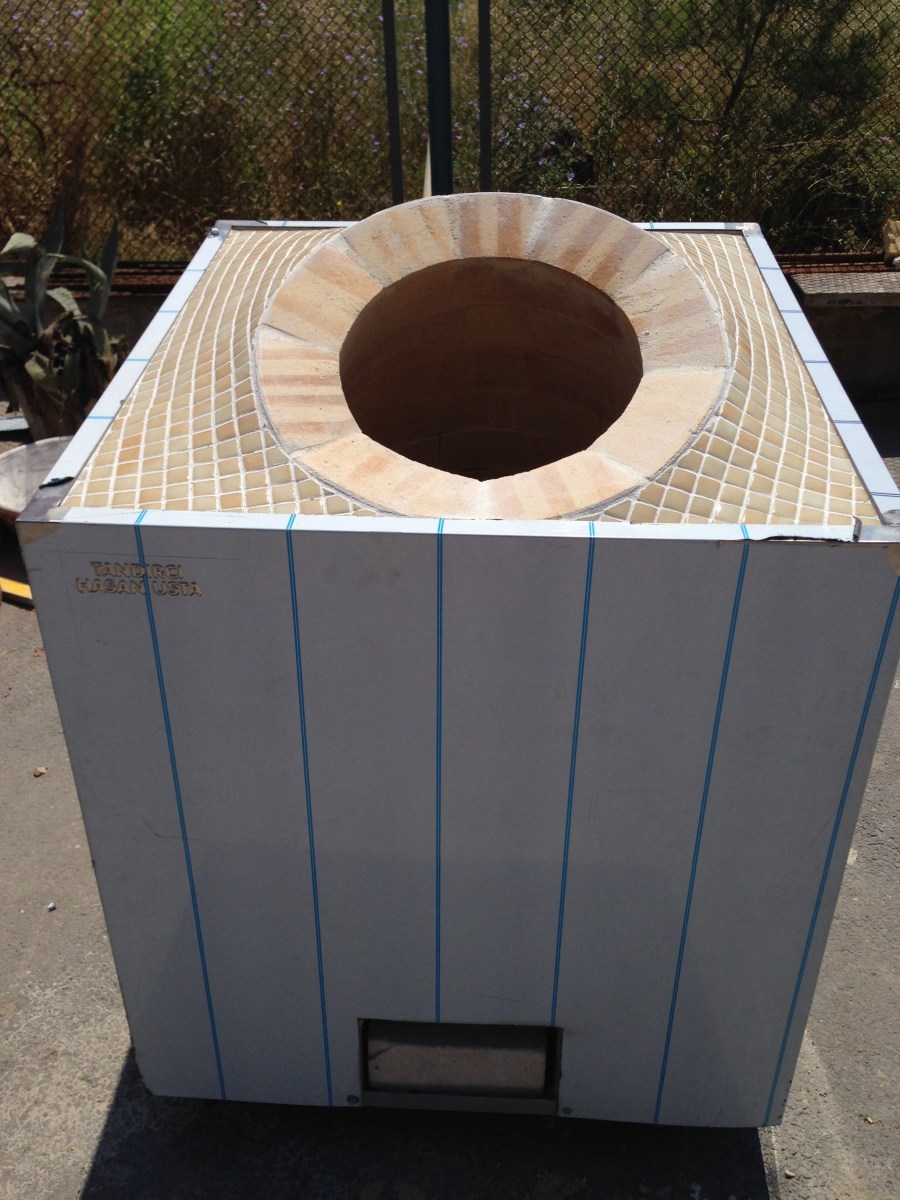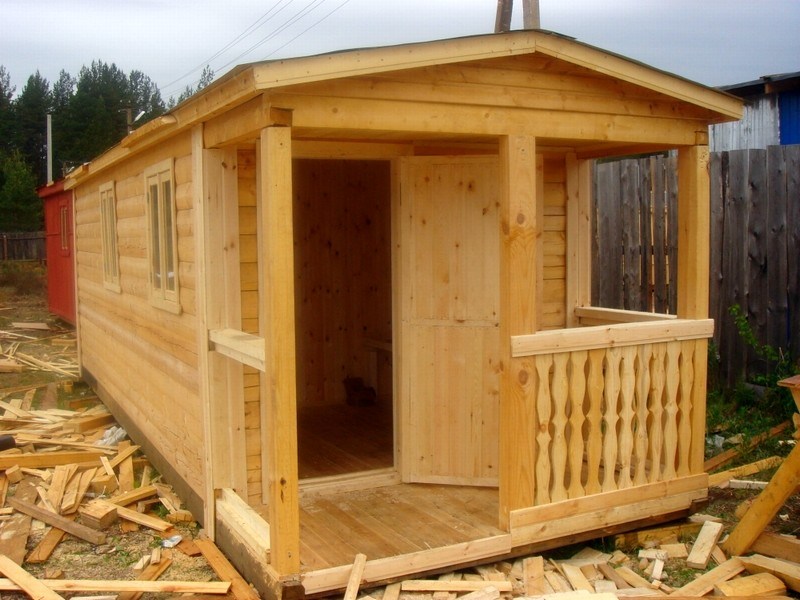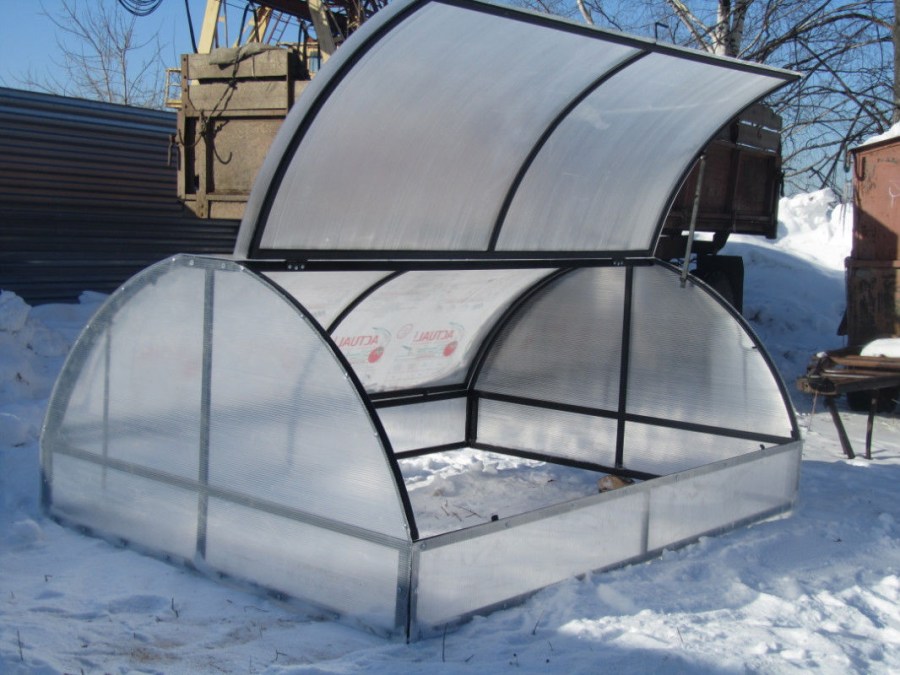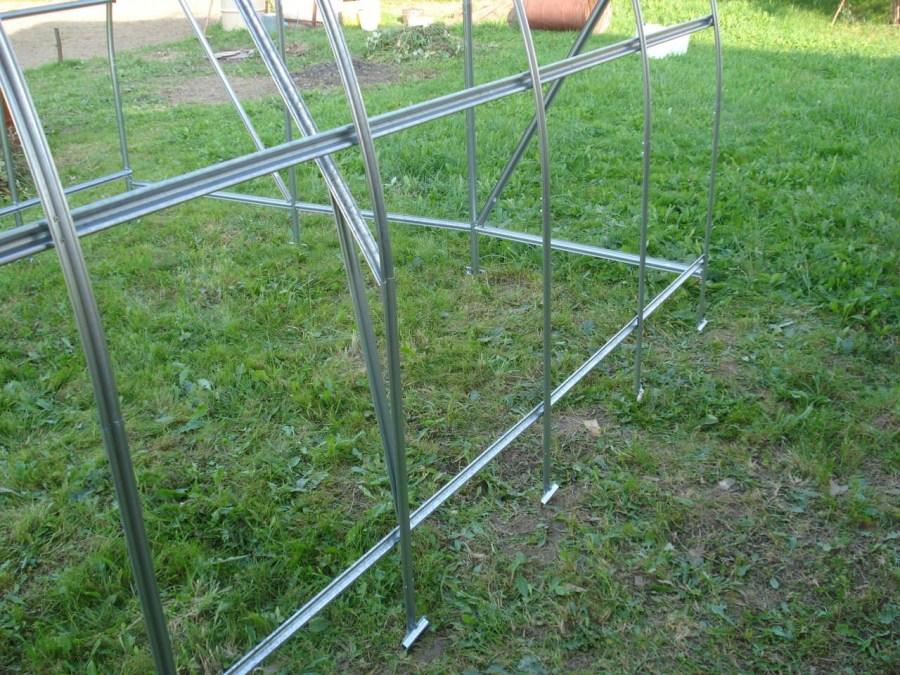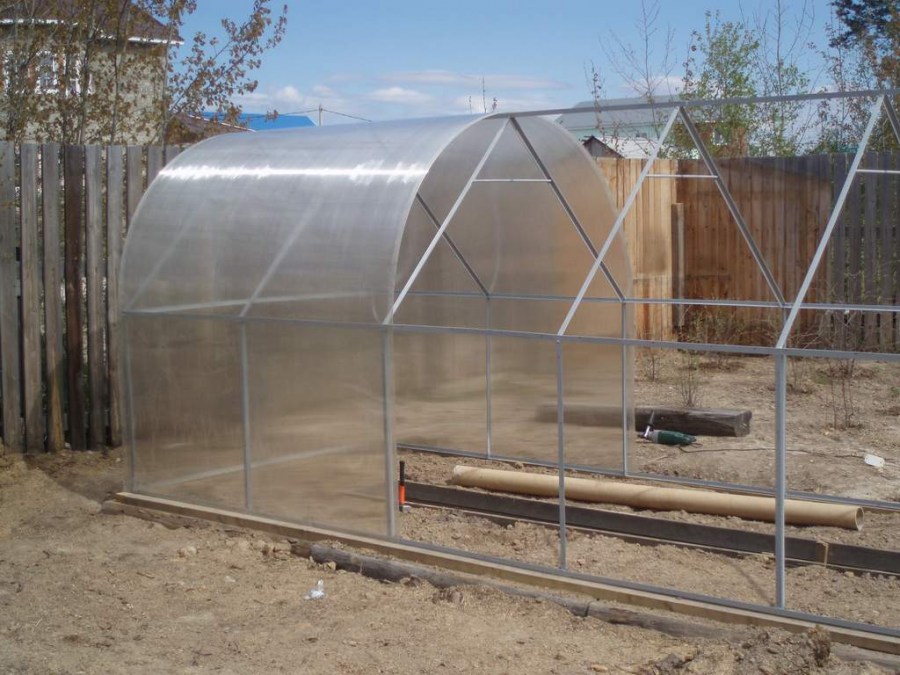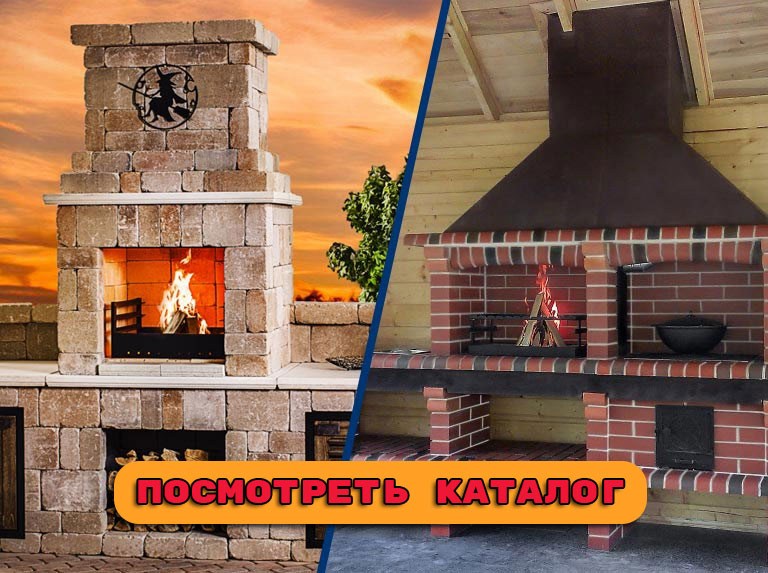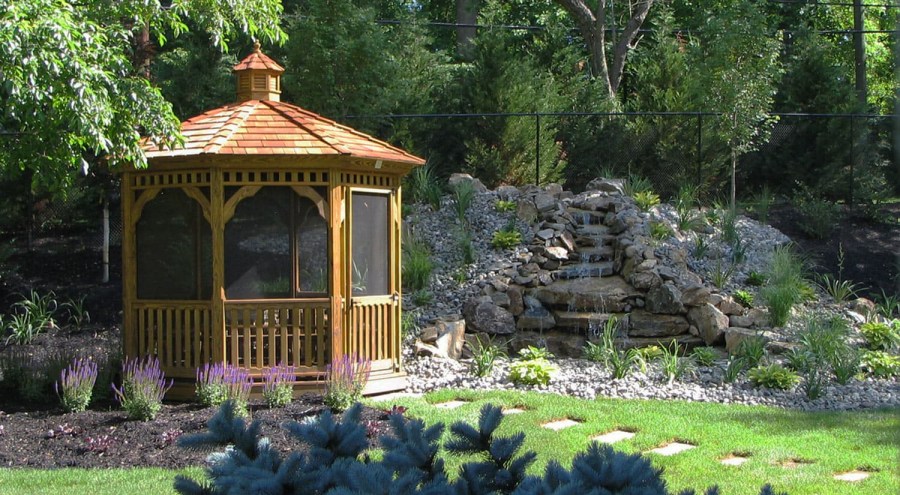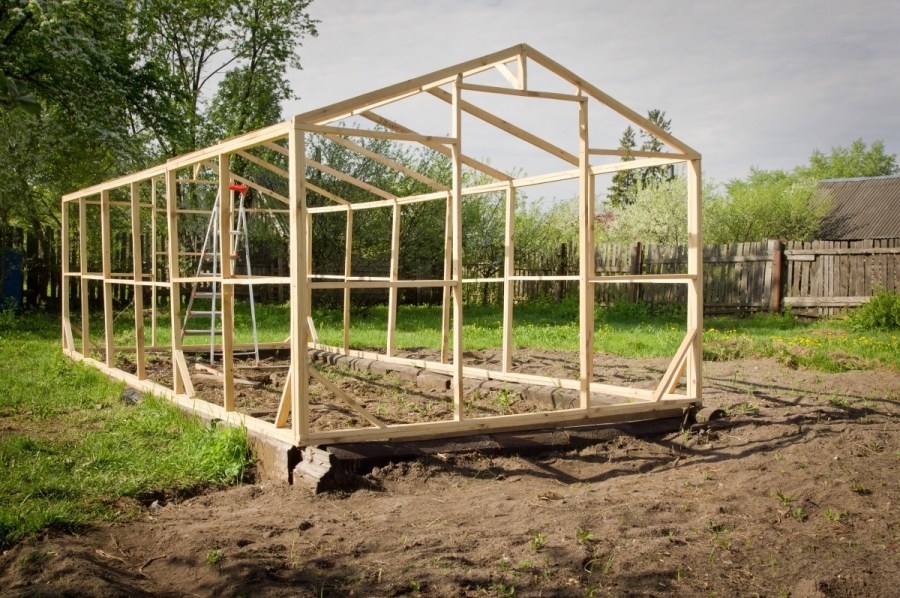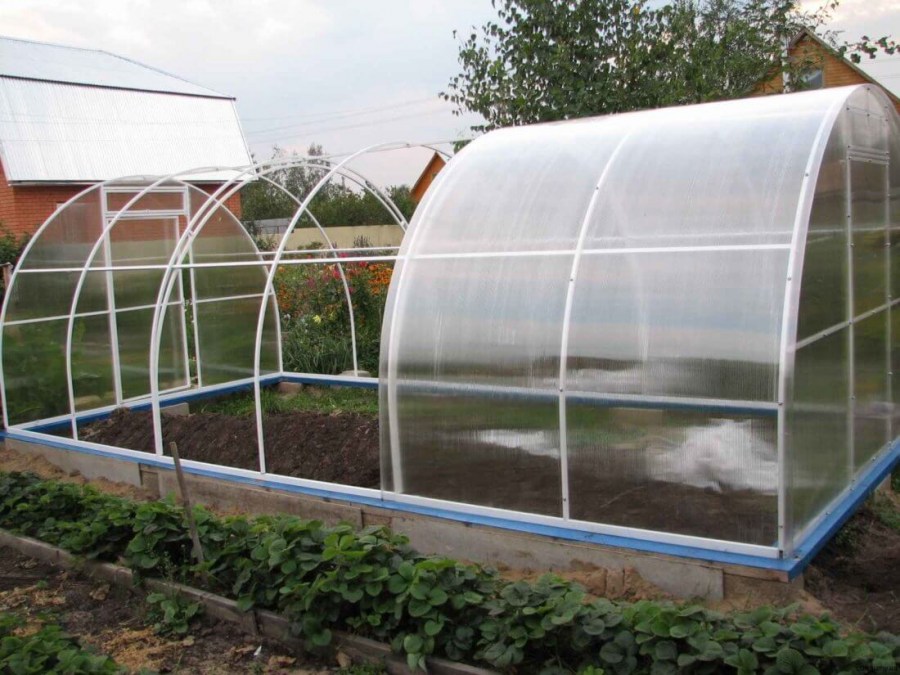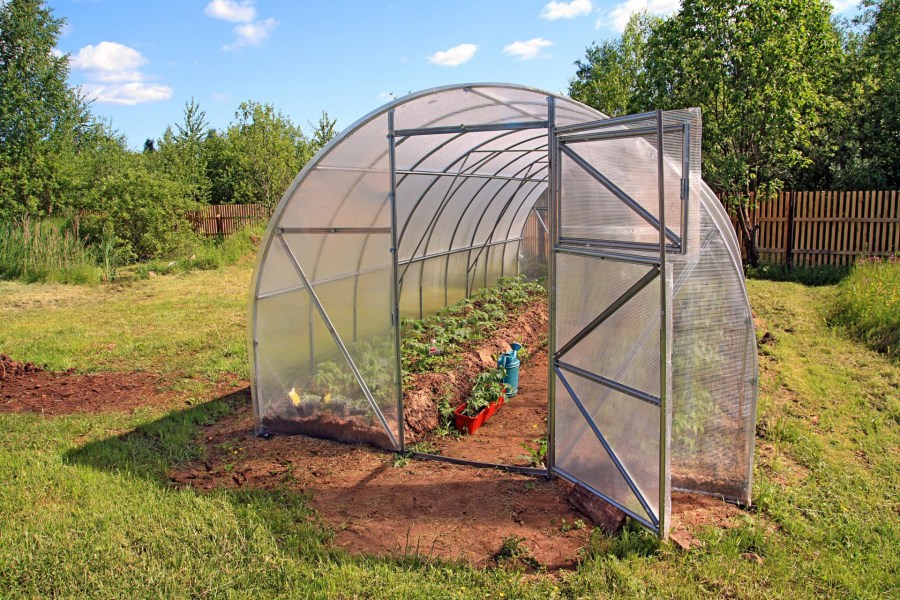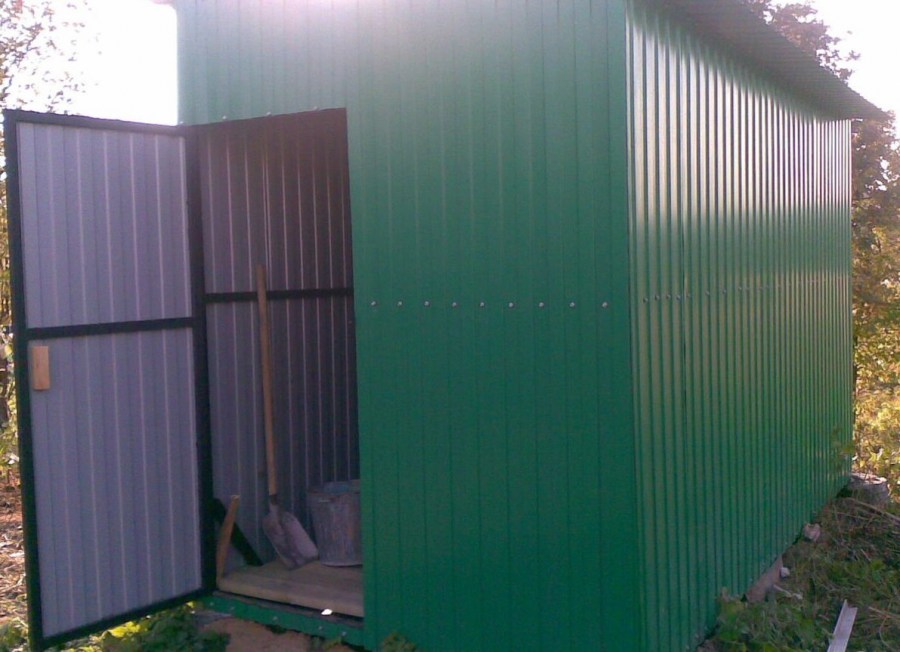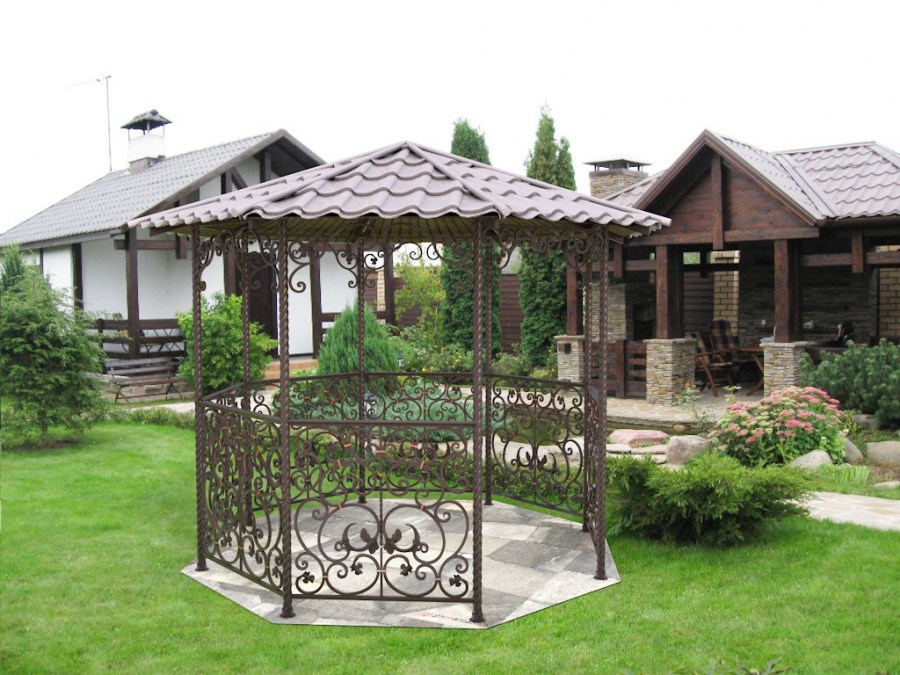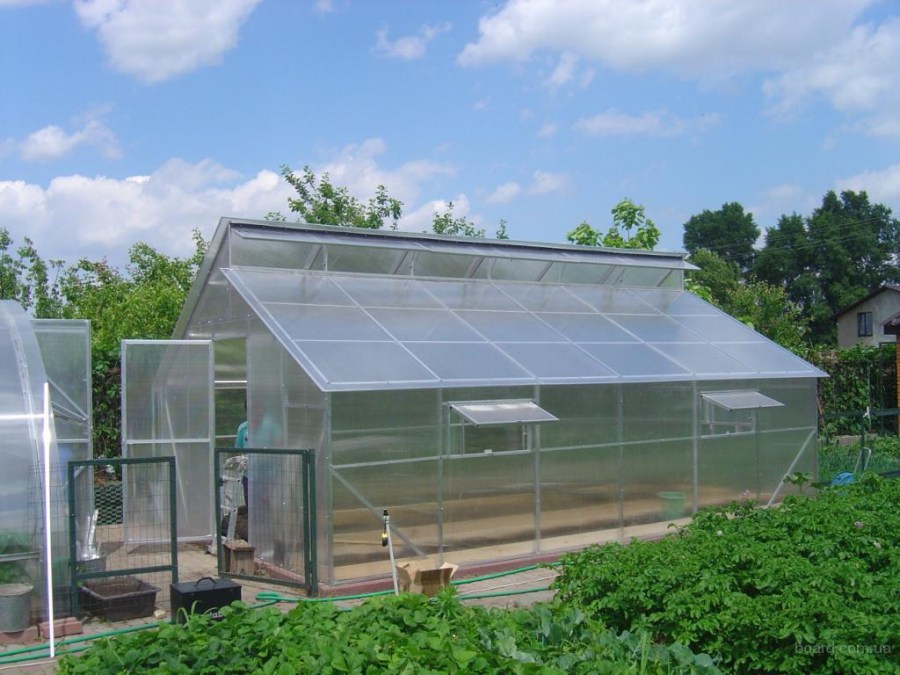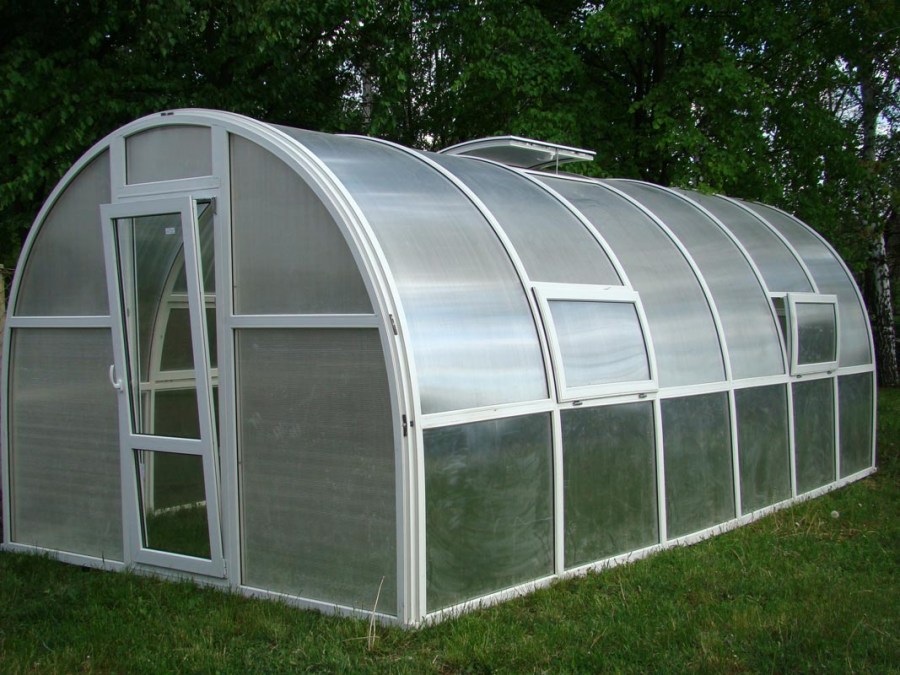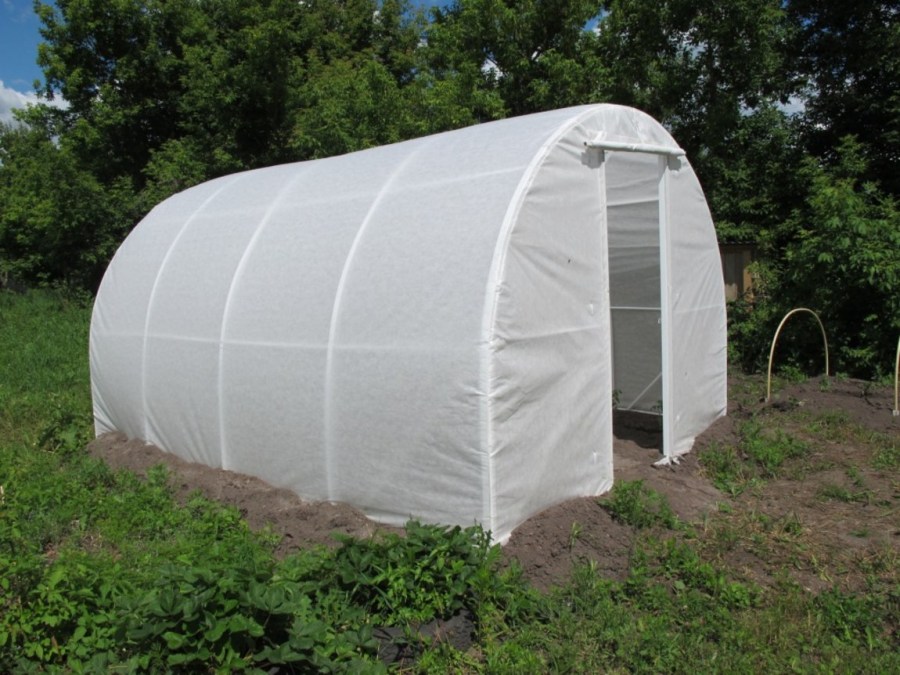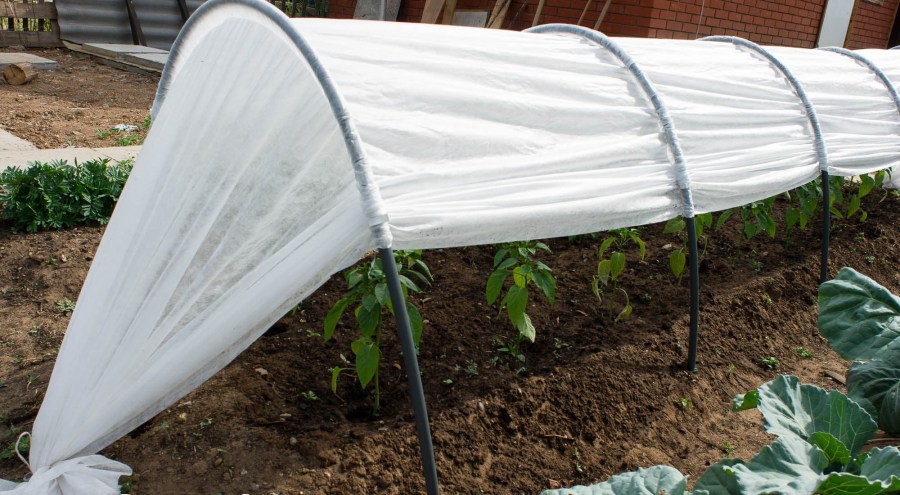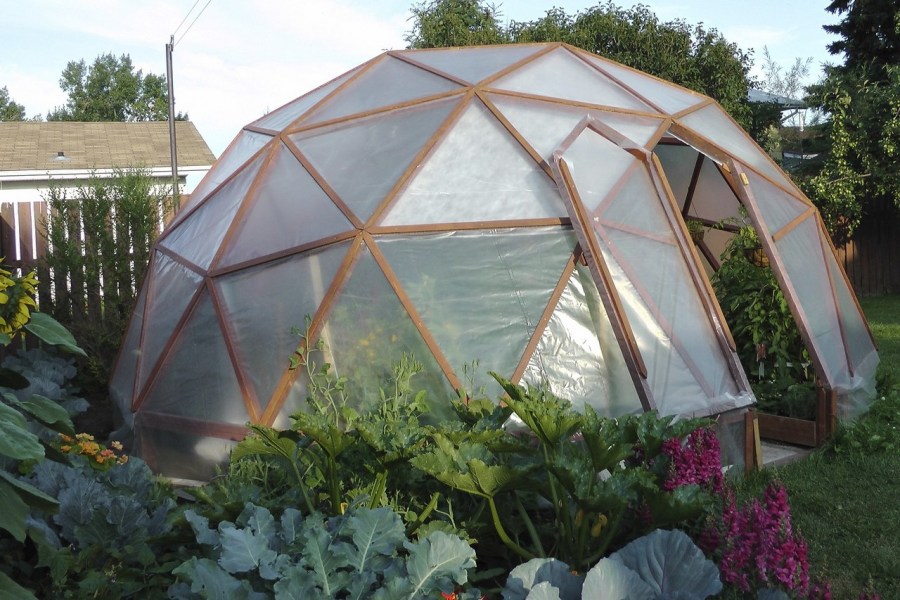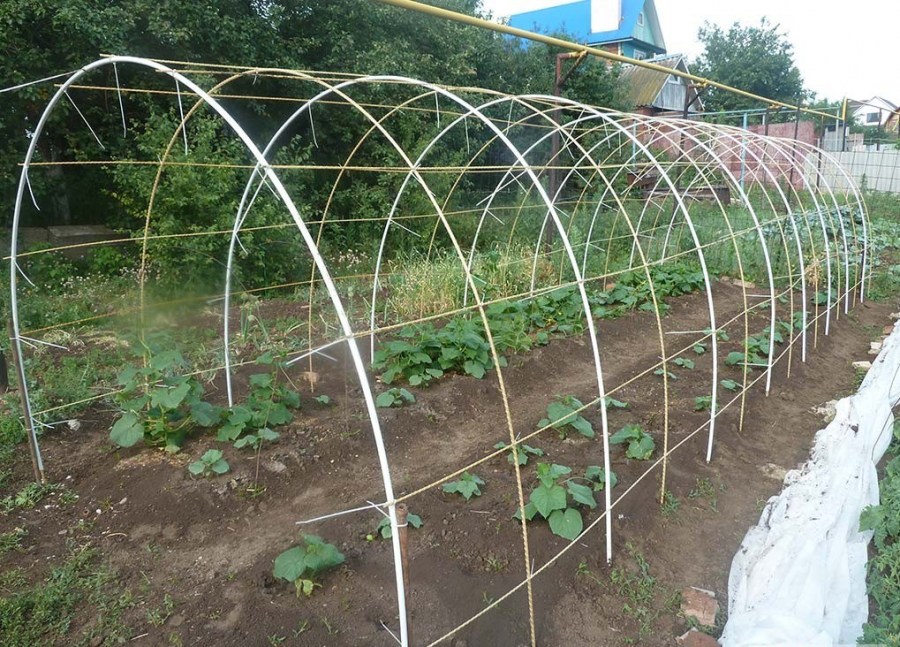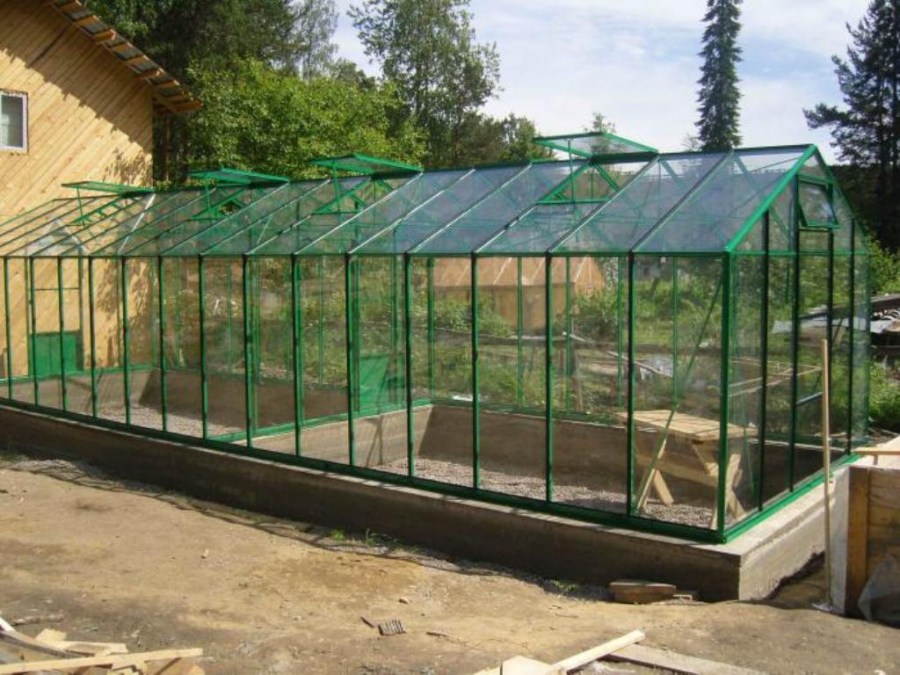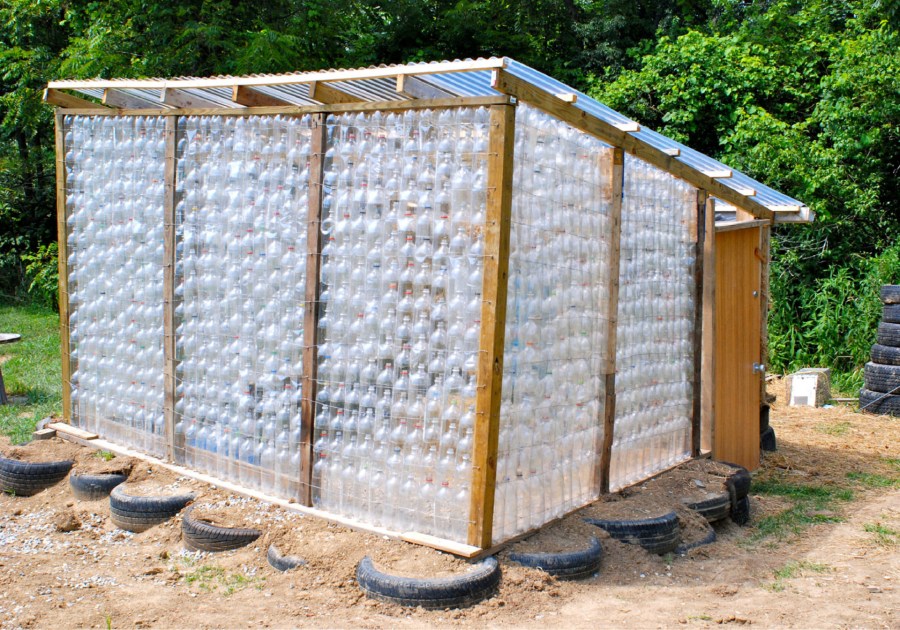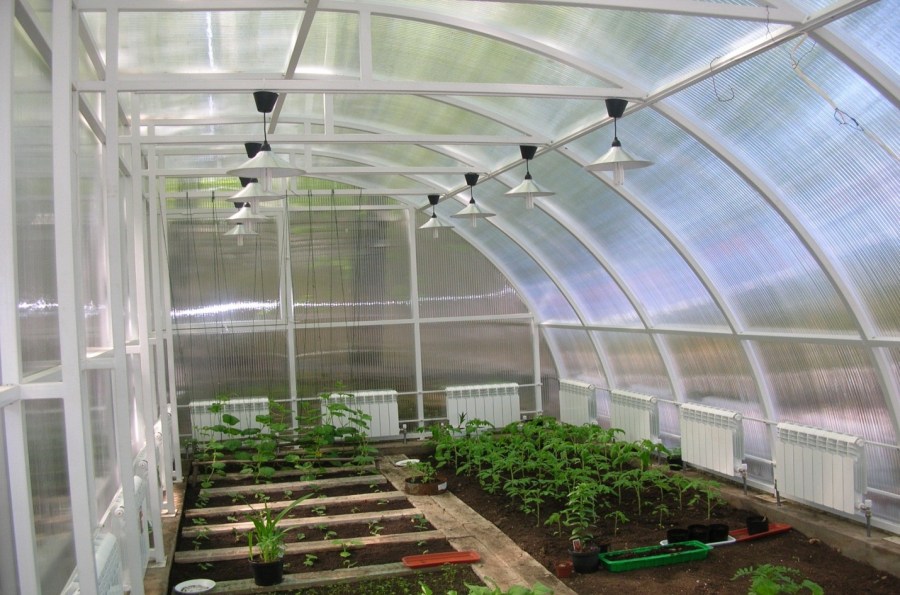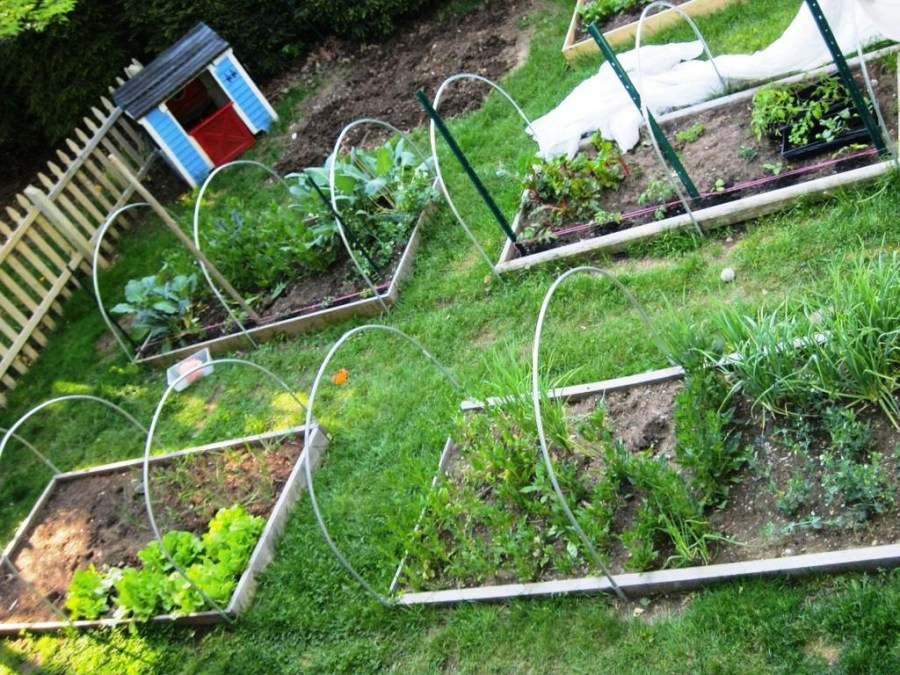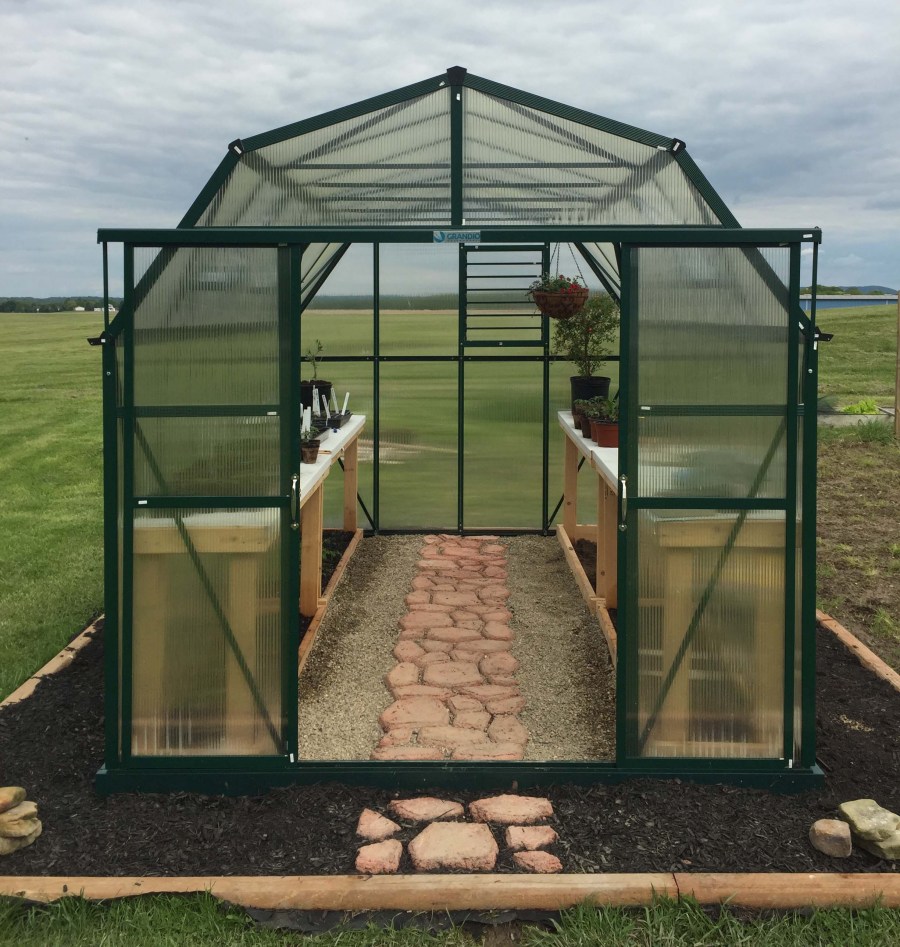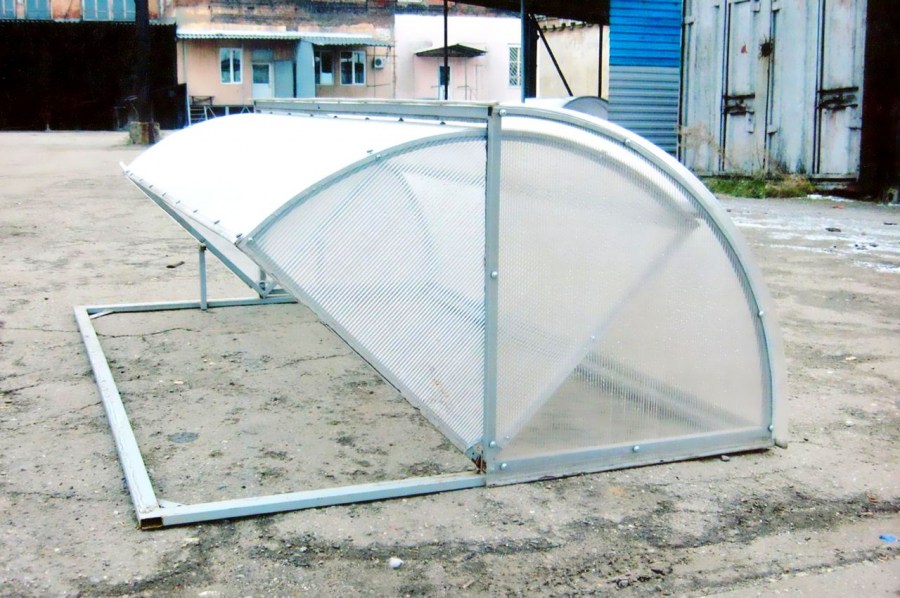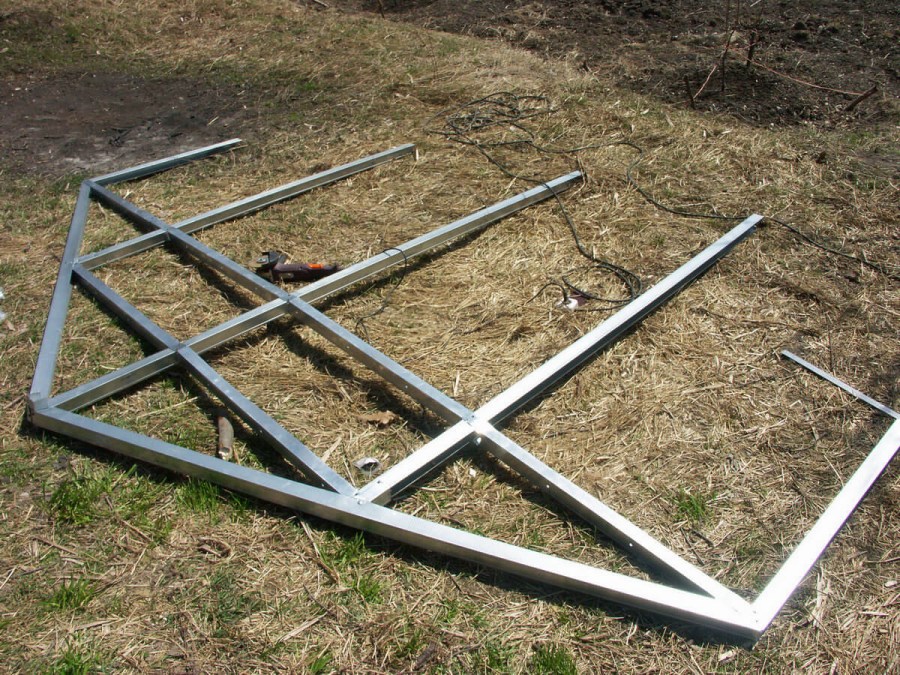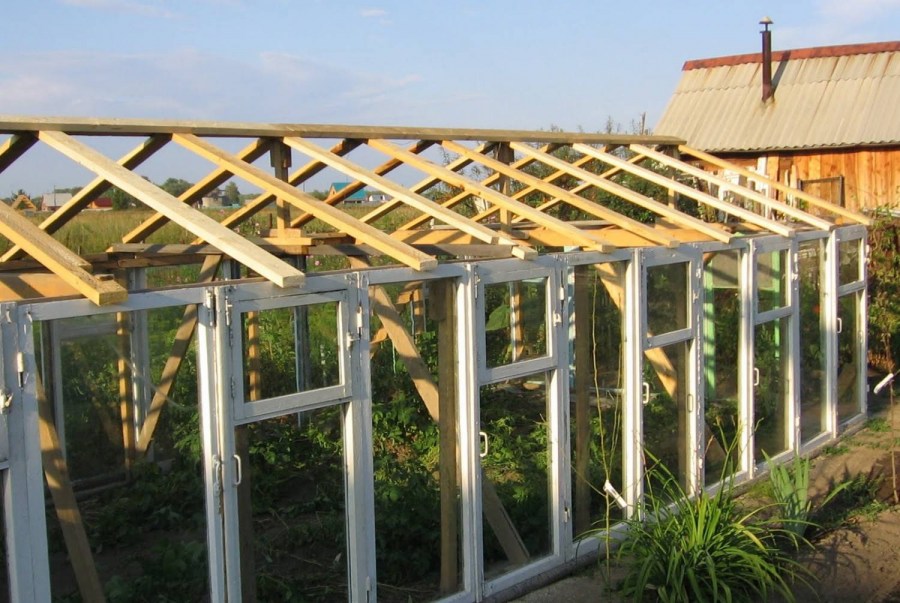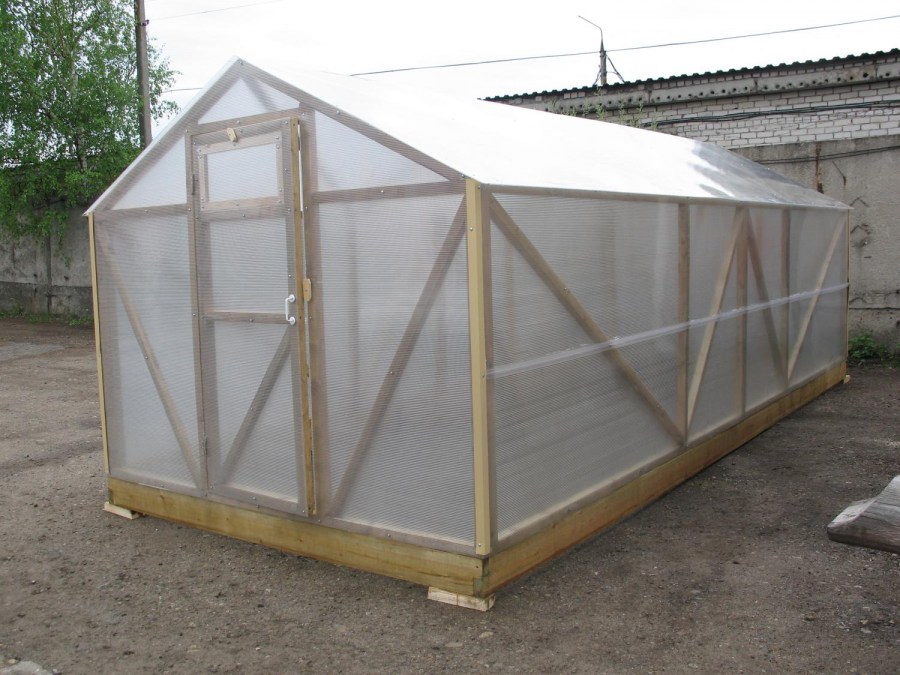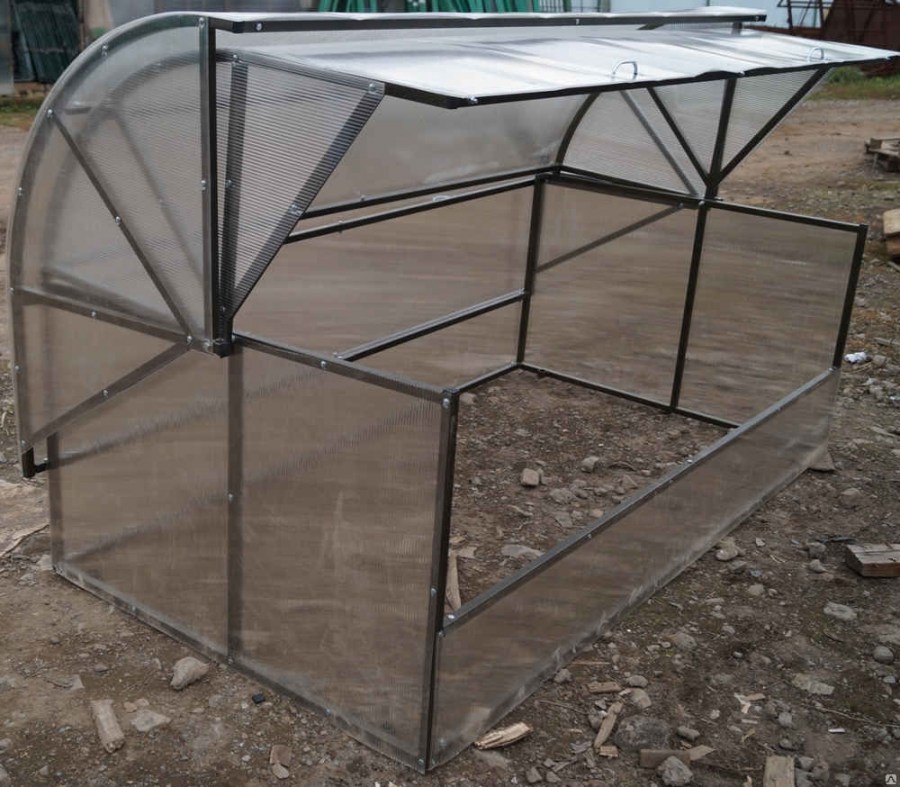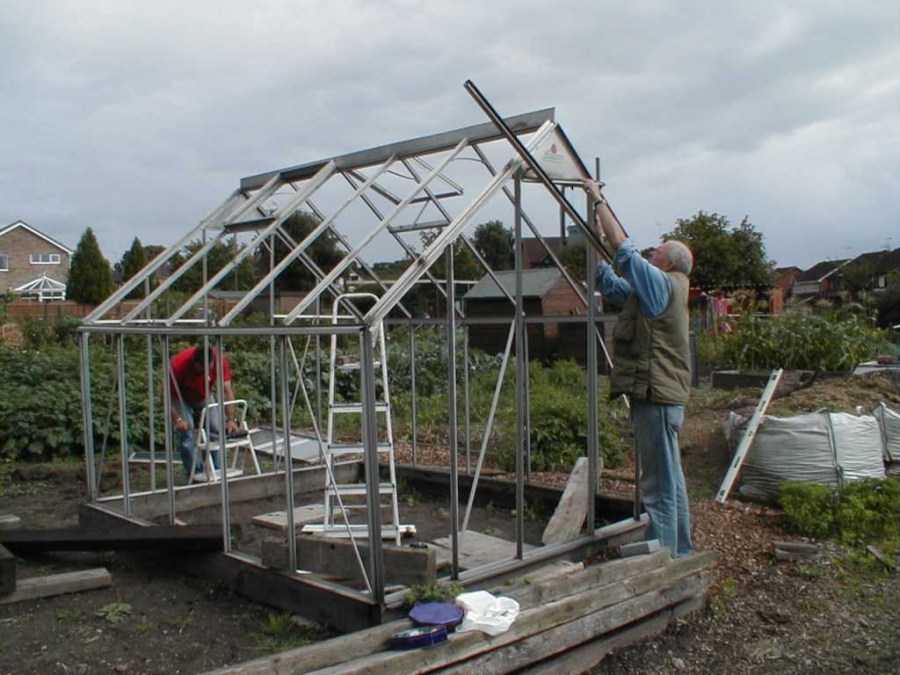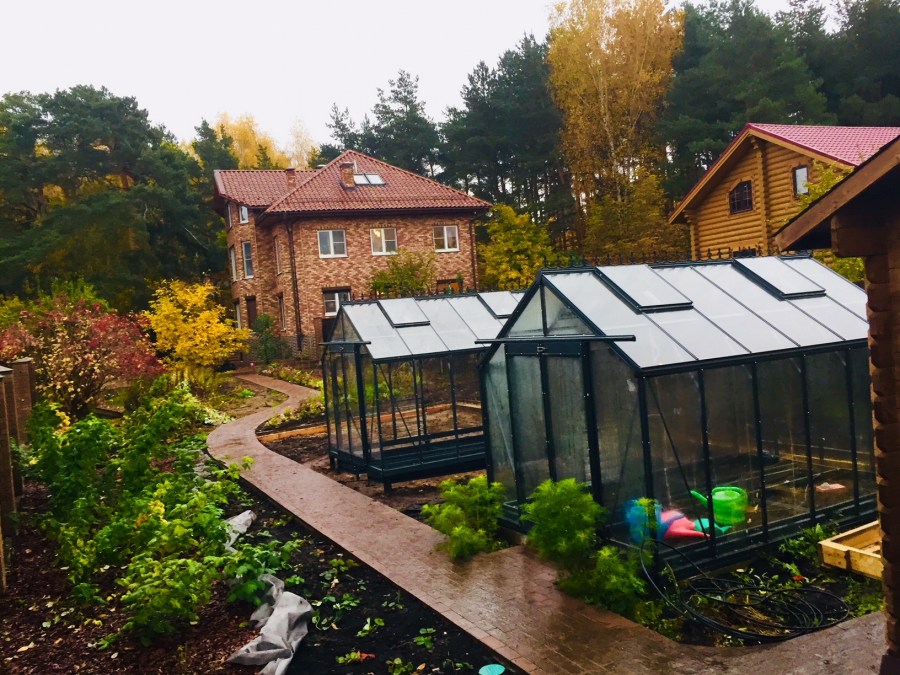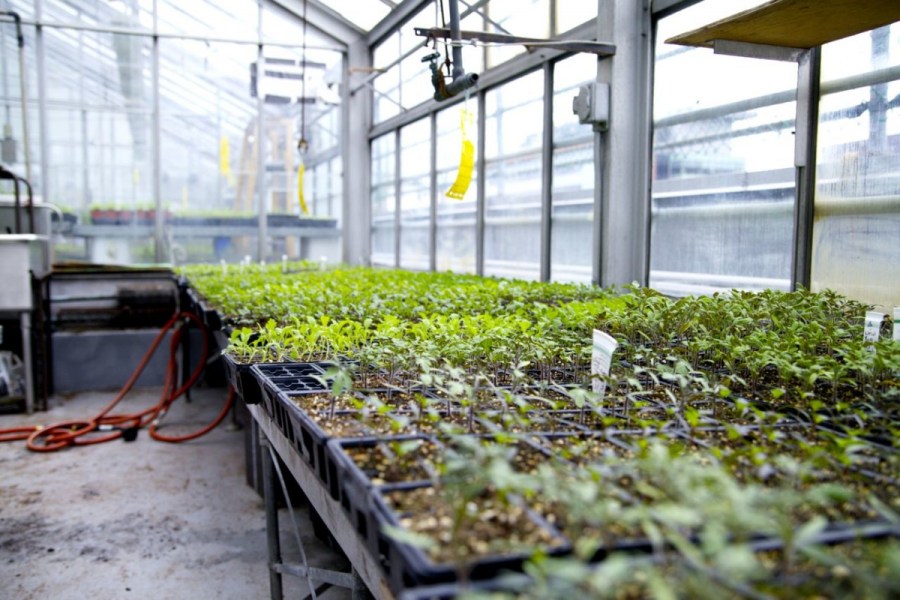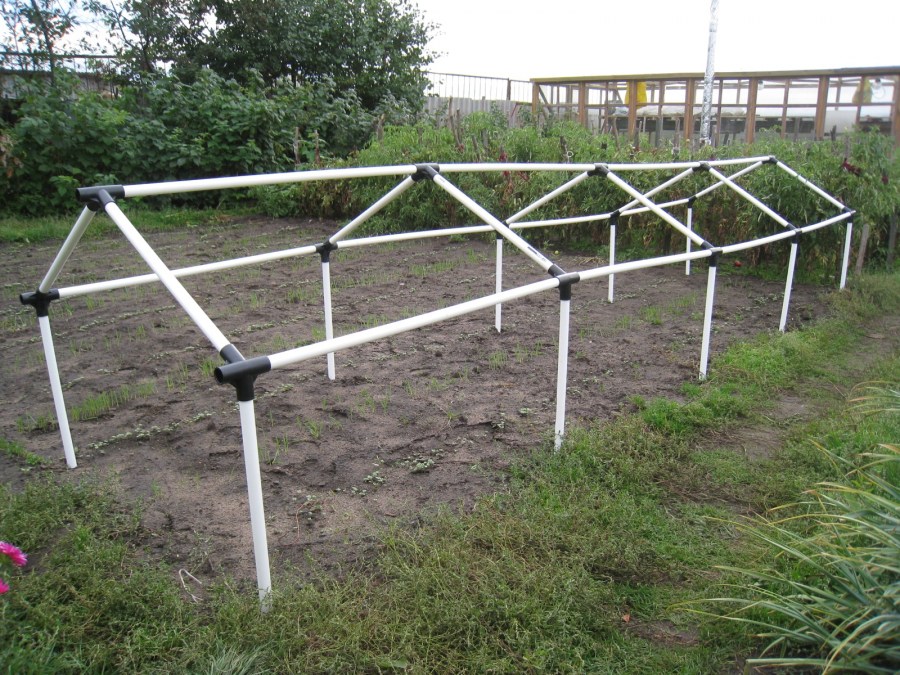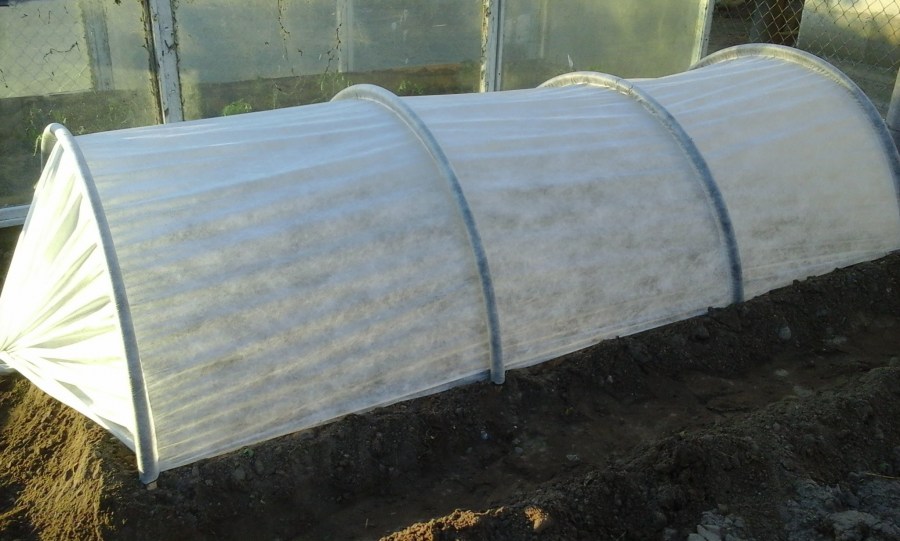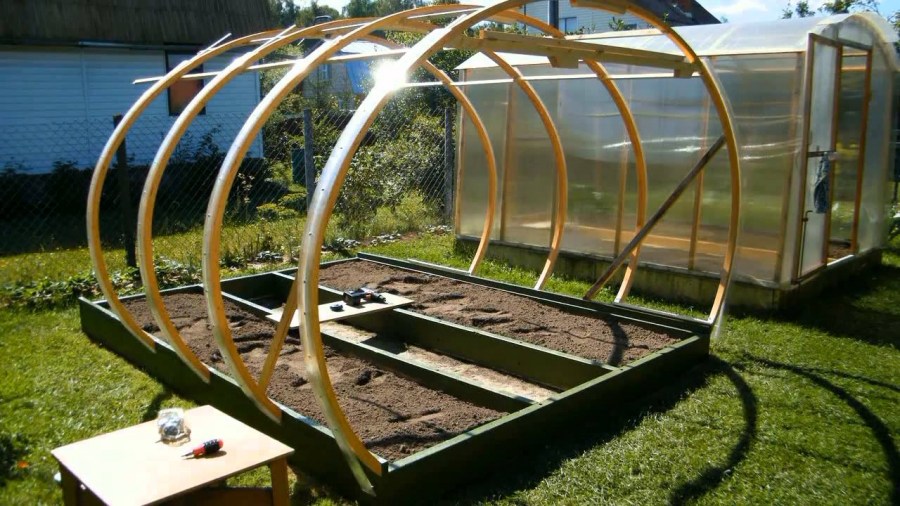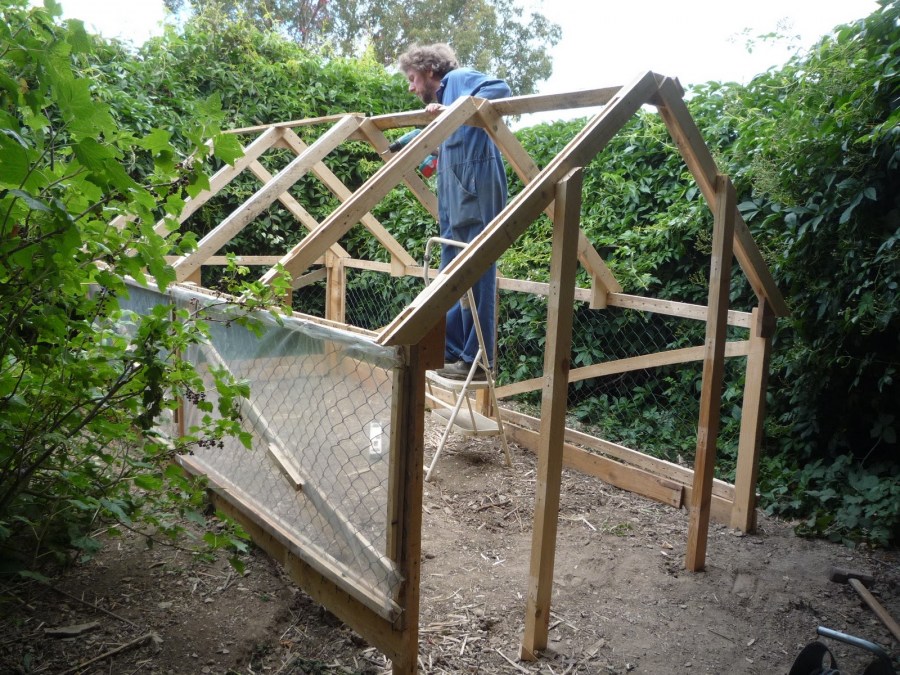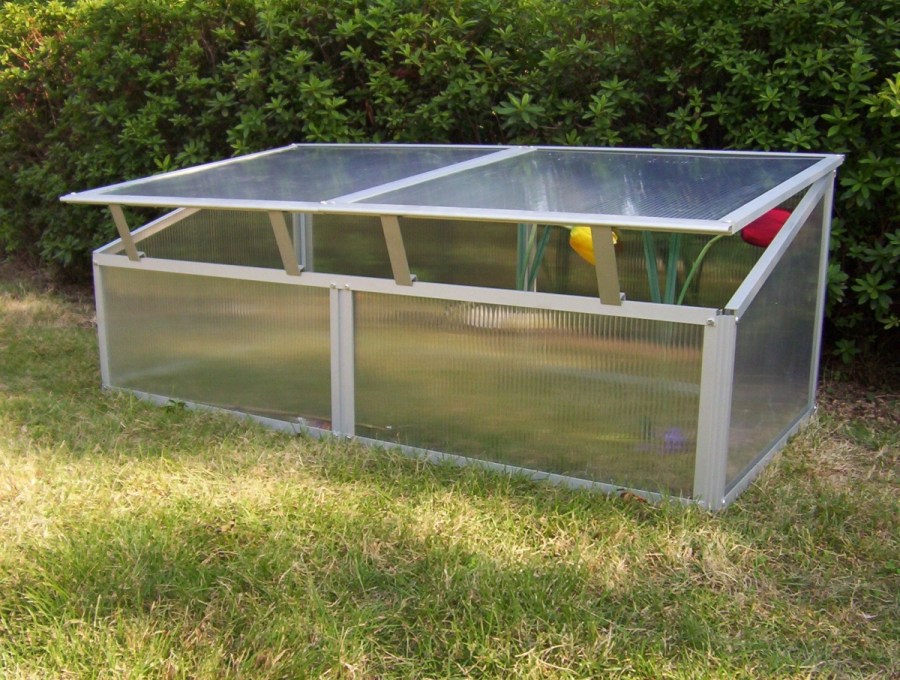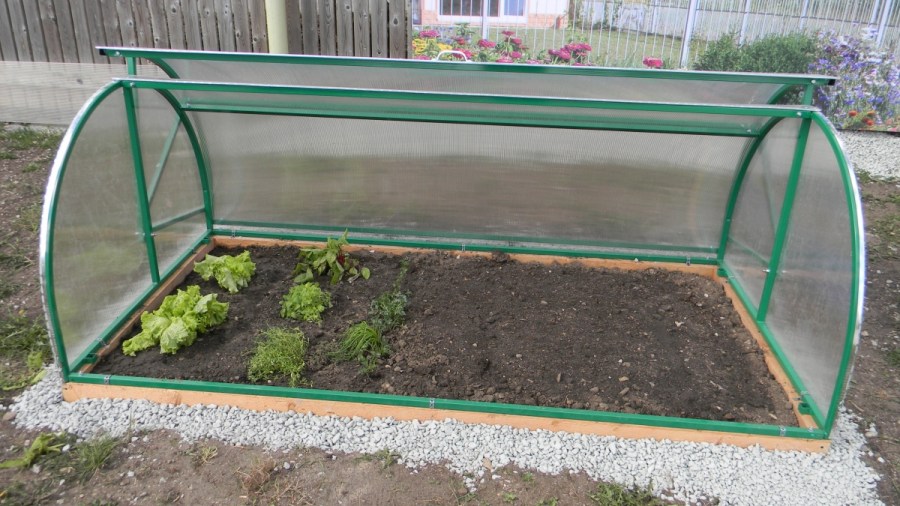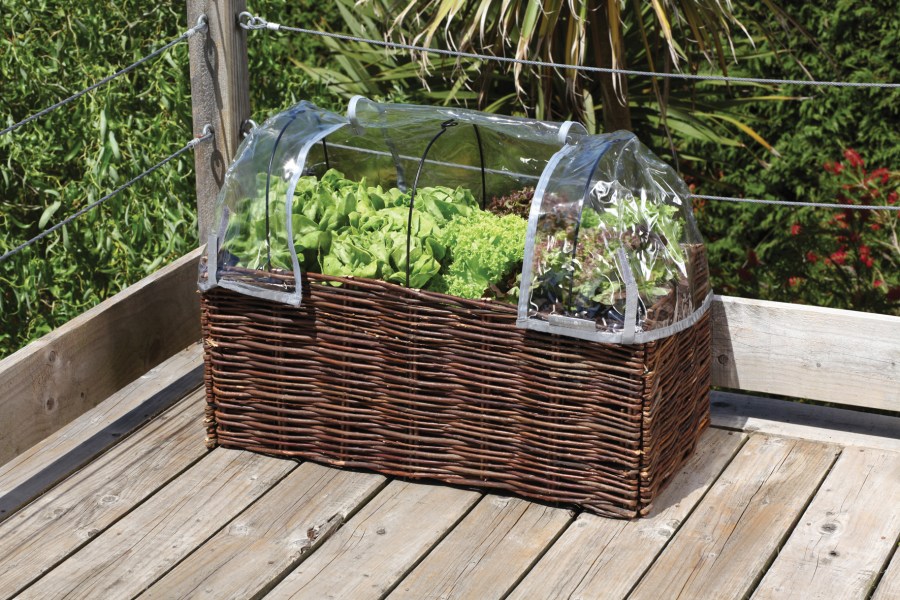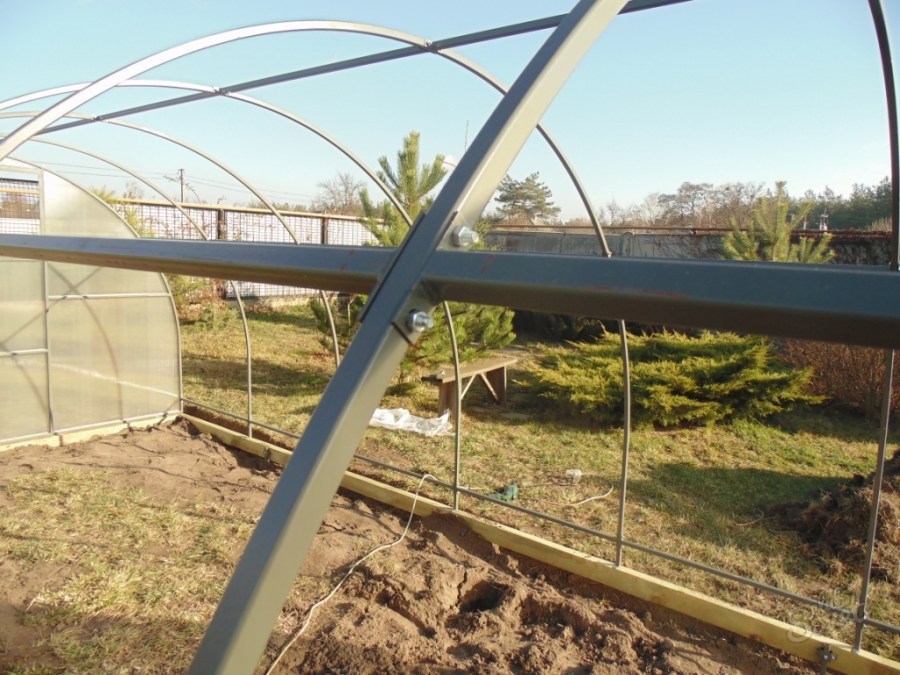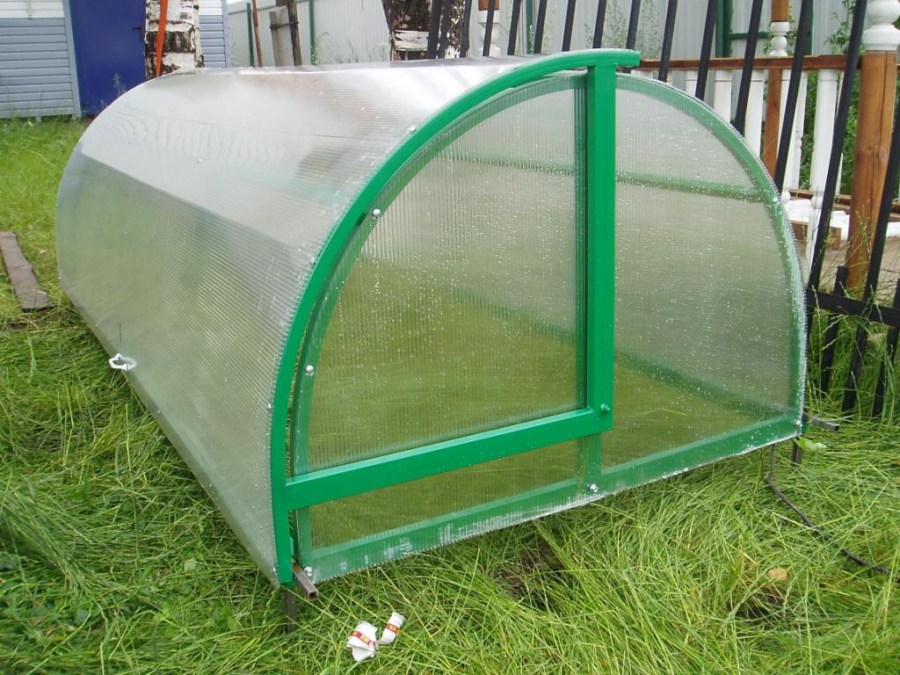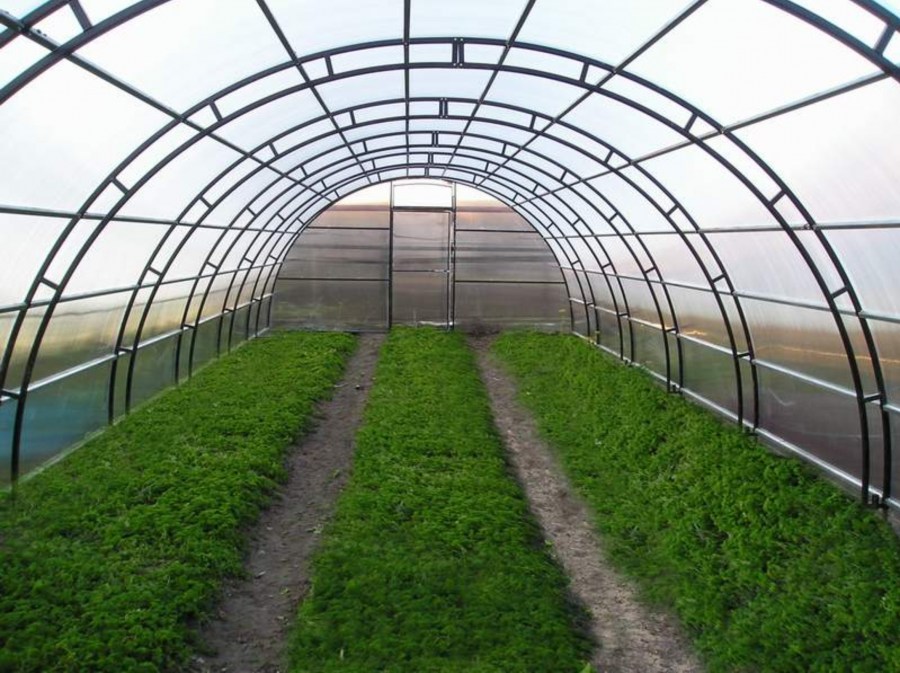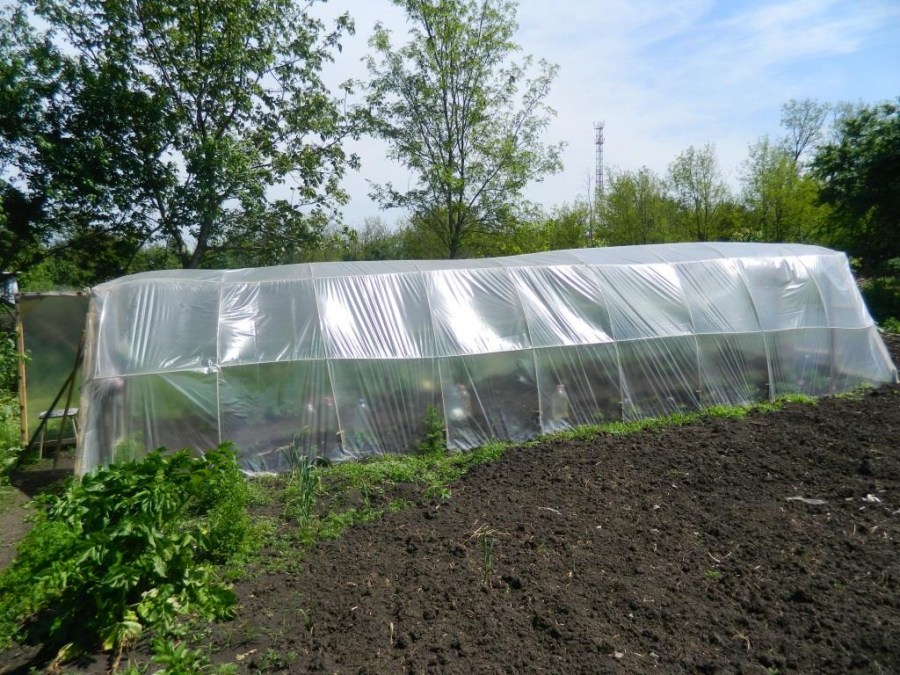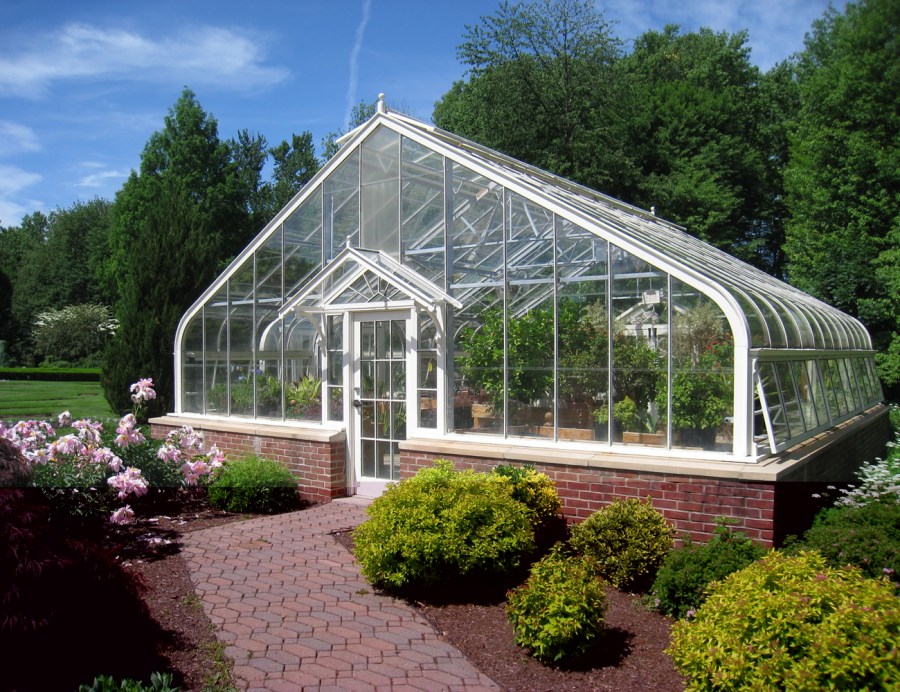DIY greenhouse - an overview of the best options for beginners. 115 photos of finished greenhouse designs in the country
The greenhouse is necessary both in a spacious summer cottage and in a small garden garden. Thanks to the installation of this design, you will get the opportunity to grow an early crop, shelter sensitive crops from frost, create conditions for the rapid growth of seedlings.
Greenhouses come in various shapes, sizes, types, this will allow you to choose a model that is ideally suited for the specific purposes of its use, climatic features of the area, the size of the garden, etc.
In order to install and build this structure on the site, it is not necessary to spend a lot of money on the purchase of the finished structure, you can equip the greenhouse zone on your own.
Determine the place
Before starting the construction of the greenhouse, it is necessary to correctly determine the place of its installation. The size of the structure, its shape, and, consequently, the amount of materials that will be needed during construction will depend on a sufficient amount of free space on the site.
When determining the place for arrangement of the structure, be sure to consider the following nuances:
The surface should be leveled, the installation of the greenhouse on slopes and strong irregularities is unacceptable. If there are holes on the intended plot of land, they must be covered with soil.
The site should be well lit, not in the shade. To ensure a good, rich crop, plants should be well lit by sunlight, so you should avoid installing a greenhouse in the shade of trees, large shrubs or outbuildings.
Unobstructed access to the structure is required, this is necessary for constant care of planted crops. The greenhouse zone should be approached from either side, its free opening and closing should also be ensured.
We calculate the dimensions
The dimensions of the greenhouse are determined taking into account the possibilities and preferences of the gardener, the varieties of crops planned for cultivation, the presence of free space in the garden.
If the design will be used exclusively for planting and breeding seedlings, it can be very small, but for the arrangement of the capital structure it is desirable to make calculations, create a preliminary draft of the greenhouse, its approximate drawing.
This is done so that in the middle of the work not to find that the prepared materials or the land freed up for installation is sorely lacking.
Creating a preliminary scheme of the greenhouse zone will correctly calculate the amount of materials needed for construction, determine the exact dimensions, choose the most convenient form for use, etc.
When determining the dimensions of the future design, be sure to pay attention to the volume of plants planned for planting. For example, for good growth of tomatoes or cucumbers, one square meter of land is enough for 2-3 bushes of crops. Based on such considerations, the required dimensions are calculated.
Types of Greenhouses
There are a lot of varieties of summer cottages, having studied numerous photos of greenhouses made by yourself, you can find both standard forms and unusual, interesting structures made by summer residents from improvised materials: barrels, umbrellas, hay, etc.
Let's focus on the most popular and convenient types of greenhouses, which are most often found in gardens:
Thermos
This view is characterized by a complete recession of the structure into the ground, only its cover can be seen on the surface. This method of the device will allow much longer to retain heat inside the building.
Greenhouse breadbox
Its discovery takes place by analogy with the same kitchen item - a bread box. The lid of the structure tilts to the back wall with one movement of the hand, and just as easily returns to its initial position. You can buy it in finished form, you can build it yourself.
Arc Greenhouse
The simplest installation and installation. You just need to stick pre-prepared metal or plastic arcs into the ground along the made beds, thereby creating a frame for the greenhouse, which is closed on top with polyethylene or other material suitable for its properties.
This design is quite easy to assemble and dismantle, it is very mobile - it is quietly rearranged from one place to another.
"House"
This structure is presented in the form of a gable roof towering above the ground. This simple view of the greenhouse zone is formed by the combination of two crates fastened in a ridge. The laths may be covered with glass, polyethylene, or other suitable material.
Butterfly
A distinctive feature of such a greenhouse is the presence of a pair of leaves that open outwards. The main advantage of this model is providing unhindered access to the structure from all sides.
Of course, by turning on the imagination, you can create your own, unique view of the greenhouse, from available materials on the site: window frames, doors, backs, bed bases, hoops and much more. For a long time dusting and forgotten in the corner of the country shed things can be an excellent solution for creating a greenhouse frame.
Applicable Materials
What can a greenhouse be made of? Often, plastic, metal or wood is usually used to create the frame.
The metal frame is the most durable and durable, in comparison with other types. Also, it is able to withstand heavy loads. The main disadvantages of the metal are the complexity of installation and susceptibility to corrosion, the second disadvantage being easily eliminated by painting the frame.
The most affordable and easy to install and process material is wood. It is not difficult for even an inexperienced gardener to build a wooden greenhouse on his own. It is enough to have a minimum of theoretical knowledge, nails and a hammer.
The disadvantages of the wood frame include the need for its constant processing against woodworkers, a shorter operational life, in comparison with metal.
The plastic frame has a long service life, but it is very fragile, it can fall or break with strong gusts of wind. Plastic is great for creating an arch frame, as it bends well, takes a given shape.
Having decided what the greenhouse framework will be made of, it is necessary to choose a covering material that serves to preserve heat inside the structure, protect plant crops from gusts of wind, rain, cold. It could be:
Glass
This is a very durable, hardy and high-quality type of coating with great weight. This material is very fragile, suitable only for structures with smooth walls. Glass does not hold ultraviolet rays, therefore it stores heat worse.
Polycarbonate
It is considered the best material used to equip the greenhouse zone. The polycarbonate greenhouse is very durable, not afraid of moderate climatic loads.
This material bends perfectly, therefore it is suitable for covering constructions of any kind, has a protective coating that prevents the penetration of direct ultraviolet radiation, and excellently retains heat.
Polyethylene
The most affordable material, however, is not distinguished by good density. Very easy to install, does not leak moisture. The main disadvantage is the fragility of polyethylene, this material will last you one or two seasons.
Spanbond
An ultramodern material with a breathable structure provides fresh air access to plants. This coating is easy to handle and install, washable.
Having selected and prepared the necessary materials, fasteners and connecting elements, having calculated the dimensions of the structure and drawing up its diagram, feel free to proceed with the creation of the greenhouse - an indispensable element in any summer house, and you will see that there is nothing complicated in arranging the greenhouse zone with your own hands.
DIY greenhouse photo
Novelties of DIY crafts for the garden: 95 photos of interesting DIY solutions
Sea buckthorn - what's her secret? Instructions for growing, planting and care at home
DIY veranda: full-fledged construction and options in the form of an extension (115 photos)
Water supply in the country - 140 photos and main characteristics of the system
Join the discussion:
